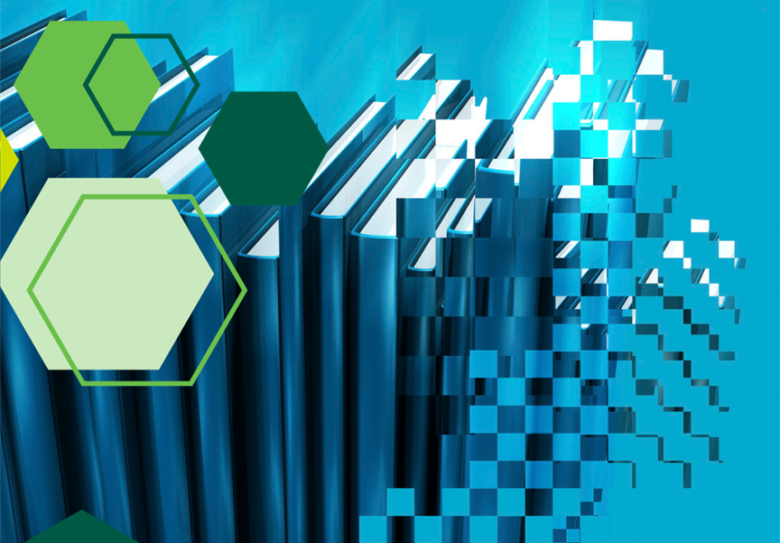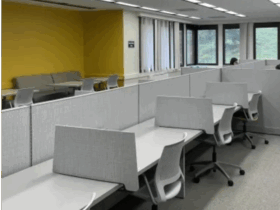One of the most common questions Digital Scholarship librarians can receive is “what is Digital Scholarship?” While information is provided on the Digital Scholarship Libguide, it remains a nebulous term on purpose. Digital Scholarship librarians exist to help with digital research and pedagogy on campus, and what that help looks like depends on who we are talking to.
This fall, the Libraries conducted a needs assessment to see what Digital Scholarship looked like in areas on campus that had yet to have much interaction with the Digital Scholarship Team. This included a focus on STEM-related departments, especially those with a strong Data Science focus that overlaps with some of our existing services. Data was gathered from faculty, staff and graduate students in departments including (but not limited to) political science, biology, health sciences, business and student assessment. Many themes emerged throughout these conversations and are summarized below.
Digital Scholarship in Many Spheres
While some people had heard of the Digital Scholarship team, attended an event or worked with a team member in the past, many people had yet to learn about Digital Scholarship. Thus, the interviews in the data collection process allowed an opportunity to not only learn more about what others were doing but also how the Libraries can help. Whether or not participants knew about Digital Scholarship in the Libraries, all of them conducted projects involving digital scholarship skills ranging from data analysis, database management, VR (virtual reality), mapping, 3D imaging and data visualization. With all these projects, the most significant challenge people mentioned is the limited time and bandwidth to seek out and learn new skills. Several people noted that they attended Digital Scholarship events but struggled to apply the skills outside a singular workshop. Despite this, everyone was searching and exploring new ways to communicate their knowledge and engage with different communities.
Hardware and Software
Unsurprisingly, there is no single platform or tool that everyone is using for their research and teaching. However, there was much more overlap than expected across such a wide range of fields. Coding-wise, many disciplines use the open-source option R for their analysis, followed by Python. These tools are well known for being open source and ideal for reproducibility when sharing data. Beyond that, others use SPSS, Stata and SAS, depending on the level of funding available. Most Digital Scholarship requests were subscription-based, such as API to access to newly locked down social media data and paid software, primarily related to Artificial Intelligence (AI) research help. Other areas that participants in the assessment mentioned a lot were website building and server space, both for themselves and their students. While considering how to expand this in the future, the University currently supports SUNY Create to create and host personal websites, exhibits and other web publishing. Overall, departments seem to have many of the tools they need for both research and teaching, such as 360 cameras, 3D scanners, GPUs and GIS labs. This information is especially helpful to plan services for the future Digital Scholarship Center (included in the Bartle Library 3rd floor renovation).
Data, Data, Data
Data Management and storage was a driving force behind this assessment. The hope was to gain insight into what people were currently doing and what gaps the Libraries could help to fill in the future. Since everyone has different types, amounts and levels of privacy for their files, several approaches were disclosed. Procedures ranged from the simplicity of Google Drive to physical hard drives to the building of large databases. Despite a central data repository for the University being a goal of the libraries in the next couple of years, only a few people spoke of needing access to different storage options. This is mainly because various fields have different expectations of how to approach data storage. Decentralized data repository usage is already done through services such as Dryad and Figshare. Much of this was dictated by the grants and publishers in that field. However, this is an area that the Libraries could help to lead researchers on.
Looking Forward to the Future
When asking people what emerging technologies they were excited about in their field, there were very specialized answers for technologies related to their specific work. But overwhelmingly, AI was the number one answer for future emerging technologies. What people shared ranged from research already involving machine learning or people incorporating it into their curriculum to wrestling with how to utilize AI or whether to include it in their research process. All of this remains an open question as the technology continues to evolve, but it is clearly something that touches all corners of the Binghamton campus.
It is very much appreciated the time everyone took to share their work and its relationship to Digital Scholarship. The feedback received as part of this assessment will help form the vision of future Digital Scholarship services and spaces. Because of the breadth of scholarship and research opportunities on campus, there is immense potential for collaborations and knowledge-sharing across different disciplines.
A more thorough assessment of the findings is forthcoming and will be posted in an upcoming edition of the Digital Scholarship newsletter and linked on The ORB: The Open Repository @ Binghamton when available.
Subscribe to the Libraries’ Digital Scholarship Newsletter to get updates on all the latest happenings, programs and research highlights monthly at: https://binghamton.us10.list-manage.com/subscribe?u=da11726527438aa3ddbd19827&id=76f34b180b






